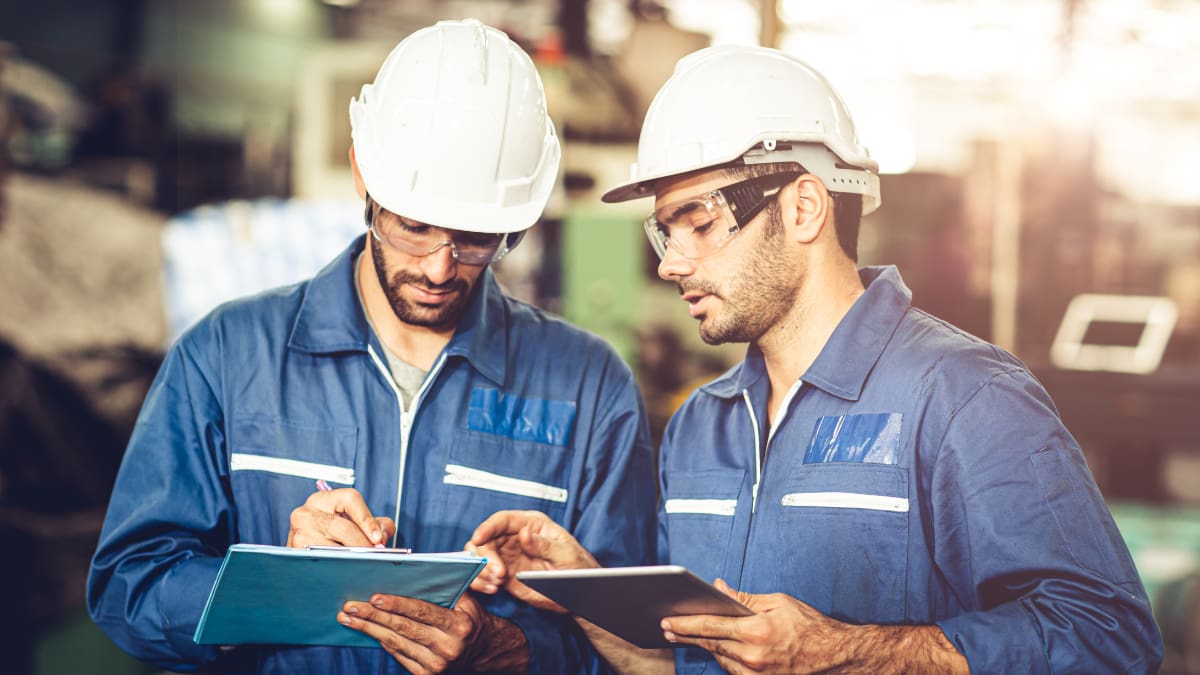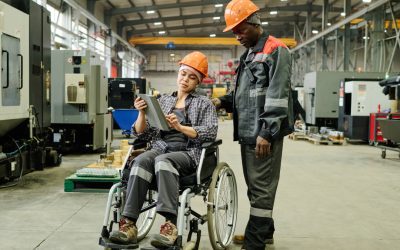Safety in manufacturing has always been and always will be, a significant concern.
And with good reason.
Manufacturing facilities use some of the most powerful and complex machinery in the world. Each product must move through multiple stages, many of which involve high-risk activities.
Unfortunately, workplace injuries in manufacturing can cause irreparable damage and, in the most severe instances, be fatal.
In fact, manufacturing is the third highest industry for fatalities, according to the Health and Safety Executive. We cannot underestimate the consequences safety, or lack of it can have on your employees and you as a business.
How can we improve safety in manufacturing?
Below, we address the common safety issues raised by health and safety professionals, We’ll also share practical strategies and highlight how new technologies can support a safer, more efficient workplace.
Is the environment safe?
Manufacturers operate methodically, with each component moving through a series of stages/steps to achieve the final product.
Because of this, floor plans and plant layouts are critical.
Essential to ensure smooth and efficient processes and reduce some of the most common safety threats.
For example:
-
Install anti-slip flooring in high-risk areas.
-
Keep workspaces clean and clutter-free.
-
Clear exits at all times.
-
Ensure a smooth, logical flow between stations.
Small changes in layout can make a big difference in reducing risk.
Carry out risk assessments
Risk assessments aren’t just a nice to have but a must-have and a requirement by law for large firms to incorporate into their daily practices to show their commitment to health and safety in the workplace.
Carrying out regular risk assessments and taking a proactive approach to reviewing all documentation thoroughly are your best chances to improve your operator’s safety in manufacturing.
Provide adequate PPE
It is your responsibility (legally) as the employer to ensure that all your operators have the necessary personal protective equipment to operate specific machinery and tools within your workplace.
This may mean carrying out requirement evaluations and regularly reviewing PPE use.
Perform regular machine/tool maintenance
The condition of the machines on the production line should be regularly reviewed for safety and to ensure that the machine itself is still delivering to the standard it should be.
Regular maintenance and inspections allow you to be aware of the condition of specific machines and ensure that all tools and equipment have the appropriate safety features in place.
Regular checks may reveal that certain tools or machines are outdated or need replacing. Act quickly to avoid unnecessary risk.
Check installation
Has everything been installed as per instruction? Who is responsible for checking this? Is this checked regularly? If not, why not?
Implement AI
The introduction of automation in manufacturing brings significant benefits to improving production lines, increasing output efficiency, and positively affecting profit margins.
However, it also plays a vital role in improving operator safety in the manufacturing industry.
By implementing automation into production lines, you can now automate those repetitive tasks and mundane processes where you most likely experience the highest volume of safety and quality issues.
Investing in robotic systems allows you to support operators in handling heavy materials, reducing risk, and allowing operators to focus on other areas of the production line.
You can also use AI technology to conduct inspections in manufacturing, identifying key safety areas that could be improved/changed. Gathering data and monitoring conditions to help make work environments safer for operators.
Automation can also be introduced in stages, for example, when upgrading or installing new components. Building on automation as the return on investment begins to grow.
Deliver consistent and adequate training
Carrying out regular safety training and reminding operators of protocol, safety measures, recording procedures, etc, is key in ensuring that safety remains at the forefront of everyone’s minds.
It is also required to provide you with confidence that all employees know how to use the machinery and tools in place, and they can do so correctly and confidently.
By keeping the lines of communication open, you will find that safety no longer becomes a taboo subject but one that everyone feels confident in talking about, asking questions, and providing challenge if something doesn’t seem quite right.
Use safety signage
The manufacturing industry is a big advocate for safety signage, and these should be placed in clear and visible places, where appropriate, at all stations around the plant.
How do we ensure operators’ safety in manufacturing?
Improving operator safety in manufacturing requires a multifaceted approach, that encompasses many and more of the points we’ve listed above.
Investing in automation in manufacturing (as well as increase efficiency and effectiveness), starts with booking a consultation with an experienced member of our team today.
Leading the way in designing, developing, and manufacturing bespoke, special purpose automation machinery for the manufacturing industry, we’re supporting manufacturers worldwide to improve their productivity, profitability, safety, and compliance – let us support your operations going forward.




